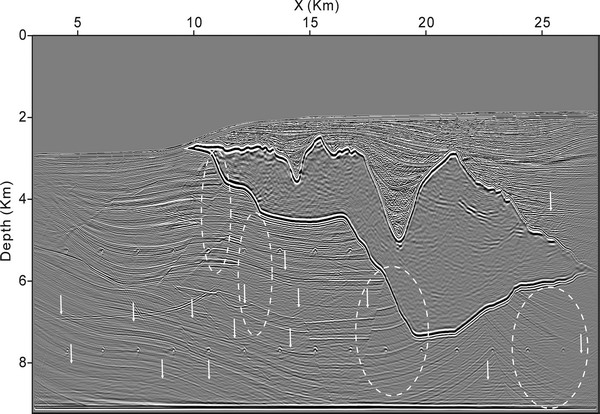Professor LIU Yike and his team modify conventional reverse time migration so that multiples can be used as constructive reflection energy for subsaltimaging.
This new approach replaces the impulsive source wavelet with the recorded data containing both primaries and multiples and uses predicted multiples as the input data instead of primary reflections. In the reverse time migration process, multiples recorded on the surface are extrapolated backward in time to each depth level, and the observed data with both primaries and multiples are extrapolated forward in time to the same depth levels, followed by a crosscorrelation imaging condition.
A numerical test on the Sigsbee2B data set shows that a wider coverage and a more balanced illumination of the subsurface can be achieved by migration of multiples compared with conventional migration of primary reflections. This example demonstrates thatreverse time migration of multiples might be a promising method for complex subsalt imaging.

Figure 1. Reverse time migration of multiples. (Image by LIU)
Liu et al. Reverse Time Migration of Multiples for Subsalt Imaging.
Geophysics, 2011, 76(5): WB209-WB216 (
Download Here)